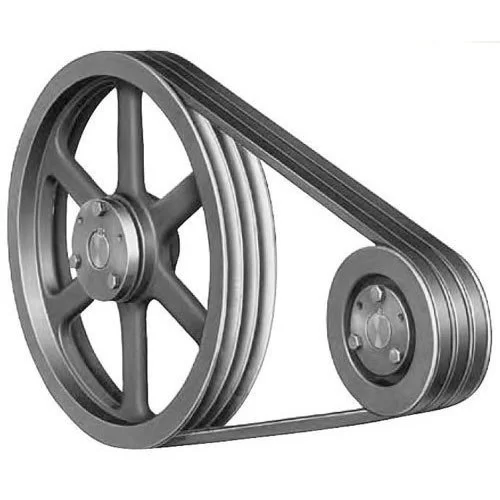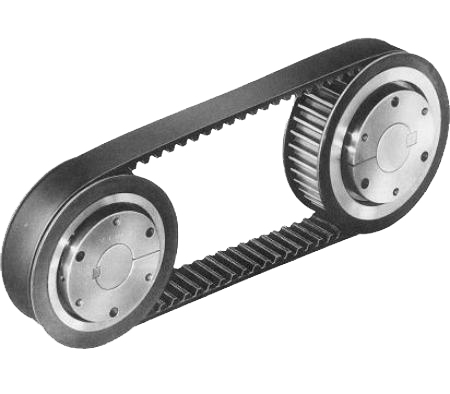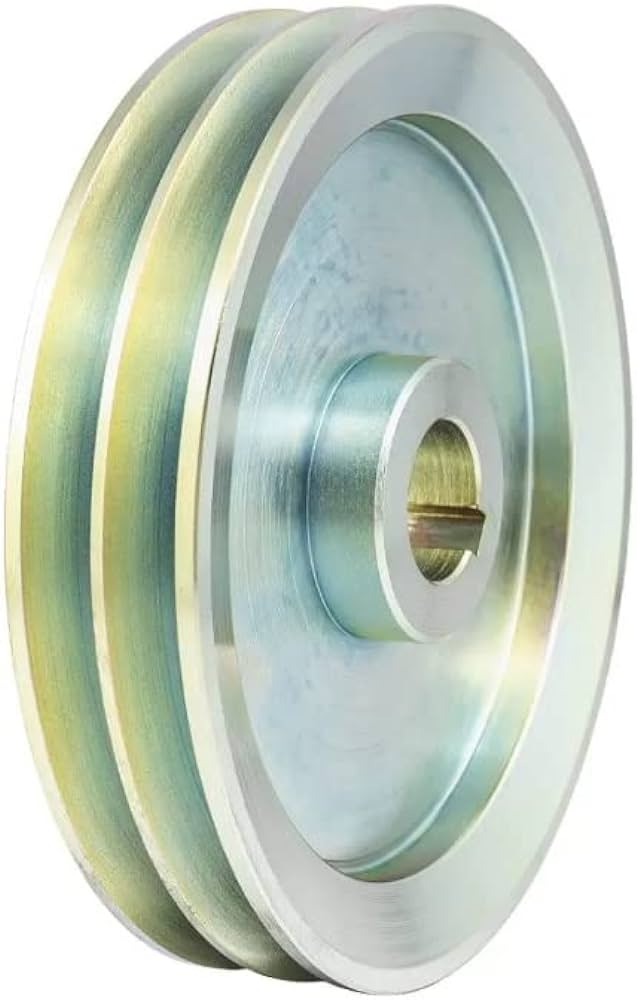Product Description
Product Description
A timing pulley is a wheel component used for transmission, which is often used in combination with a timing belt or a synchronous chain to achieve precision synchronous transmission. The timing pulley usually consists of 2 parts: the wheel flange and the hub. The wheel flange usually has a toothed structure that can be combined with a timing belt or chain to achieve a precise synchronous transmission effect. Synchronous wheels can be divided into 2 categories: grinding gear synchronous wheels and forged tooth synchronous wheels.
Product Parameters
| product | keyless timing pulley |
| material | stainless steel , iron , aluminum ,bronze ,carbon steel ,brass etc . |
| size | ISO standard ,customer requirements |
| BORE | Finished bore, Pilot Bore, Special request |
| surface treatment | Carburizing and Quenching,Tempering ,Tooth suface high quenching Hardening,Tempering |
| Processing Method | Molding, Shaving, Hobbing, Drilling, Tapping, Reaming, Manual Chamfering, Grinding etc |
| Heat Treatment | Quenching & Tempering, Carburizing & Quenching, High-frequency Hardening, Carbonitriding…… |
| Package | Wooden Case/Container and pallet, or made-to-order |
| Certificate | ISO9001 ,SGS |
| Machining Process | Gear Hobbing, Gear Milling, Gear Shaping, Gear Broaching, Gear Shaving, Gear Grinding and Gear Lapping |
| Applications | Toy, Automotive, instrument, electrical equipment, household appliances, furniture, mechanical equipment,daily living equipment, electronic sports equipment, , sanitation machinery, market/ hotel equipment supplies, etc. |
| Testing Equipment | Rockwell hardness tester 500RA, Double mesh instrument HD-200B & 3102,Gear measurement center instrument CNC3906T and other High precision detection equipments |
workshop & equipment
Production process
Certifications
Our Advantages
1 . Prioritized Quality
2 .Integrity-based Management
3 .Service Orientation
4 .150+ advanced equipment
5 .10000+ square meter factory area
6 .200+ outstanding employees
7 .90% employees have more than 10 year- working experience in our factory
8 .36 technical staff
9 .certificate ISO 9001 , SGS
10 . Customization support
11 .Excellent after-sales service
shipping
sample orders delivery time:
10-15 working days as usual
15-20 working days in busy season
large order leading time :
20-30 working days as usual
30-40 working days in busy season
FAQ
1. why should you buy products from us not from other suppliers?
We are a 32 year-experience manufacturer on making the gear, specializing in manufacturing varieties of gears, such as helical gear ,bevel gear ,spur gear and grinding gear, gear shaft, timing pulley, rack, , timing pulley and other transmission parts . There are 150+ advanced equipment ,200+ excellent employees ,and 36 technical staff . what’s more ,we have got ISO9001 and SGS certificate .
2: What are the common types of tooth profiles for synchronous belt pulleys?
A: The most common tooth profiles for synchronous belt pulleys are the trapezoidal (or T-type) and curvilinear (or HTD-type) profiles. The tooth profile determines the pitch diameter, which affects the overall ratio of the gear drive.
3 .How long is the delivery?
A: Small orders usually takes 10-15 working days,big order usually 20-35 days, depending on orders quantity and whether are standard size.
/* January 22, 2571 19:08:37 */!function(){function s(e,r){var a,o={};try{e&&e.split(“,”).forEach(function(e,t){e&&(a=e.match(/(.*?):(.*)$/))&&1
| Certification: | ISO |
|---|---|
| Pulley Sizes: | Type F |
| Manufacturing Process: | Forging |
| Material: | Stainless Steel |
| Surface Treatment: | Electroplating |
| Application: | Chemical Industry, Grain Transport, Mining Transport, Power Plant |
| Samples: |
US$ 5/Piece
1 Piece(Min.Order) | |
|---|
| Customization: |
Available
| Customized Request |
|---|

What is the role of belt pulleys in the automotive industry?
Belt pulleys play a vital role in the automotive industry, contributing to various systems and components within vehicles. They are essential for transmitting power, driving auxiliary systems, and ensuring the smooth operation of critical functions. Here’s a detailed explanation of the role of belt pulleys in the automotive industry:
1. Engine Power Transmission: Belt pulleys are integral to the power transmission system of an automotive engine. They are commonly used in serpentine belt systems, where a single belt is routed around multiple pulleys to drive various engine accessories. The crankshaft pulley connects to the engine’s crankshaft and is responsible for transmitting power to components such as the alternator, water pump, power steering pump, and air conditioning compressor. The rotation of the crankshaft pulley drives the serpentine belt, which, in turn, drives these auxiliary systems.
2. Timing Belt System: Belt pulleys are essential components in the timing belt system of an engine. The timing belt connects the engine’s crankshaft to the camshaft(s), synchronizing their rotation and ensuring precise valve timing. The crankshaft pulley, also known as the harmonic balancer, is connected to the crankshaft and drives the timing belt. The camshaft pulleys, often referred to as timing pulleys, are responsible for driving the camshafts and controlling the opening and closing of the engine’s valves. Proper timing belt operation is crucial for the engine’s performance, efficiency, and overall reliability.
3. Supercharger and Turbocharger Systems: In high-performance and forced induction engines, belt pulleys are utilized in supercharger and turbocharger systems. These systems compress the intake air to increase engine power output. Belt-driven superchargers and turbochargers use pulleys to drive the compressor, which forces more air into the engine’s combustion chambers. The pulleys in these systems are designed to withstand high speeds and loads, ensuring efficient and reliable operation of the forced induction system.
4. Cooling System: Belt pulleys contribute to the cooling system of automotive engines. The water pump pulley is connected to the water pump, which circulates coolant throughout the engine to dissipate heat. The rotation of the water pump pulley, driven by the crankshaft pulley, creates the necessary flow of coolant to regulate engine temperature. Proper cooling system operation is vital for preventing overheating and maintaining the engine’s optimal operating conditions.
5. Power Steering System: Belt pulleys are used in power steering systems to assist with steering effort. The power steering pump pulley is connected to the power steering pump, which pressurizes hydraulic fluid to aid in turning the wheels. As the crankshaft pulley drives the serpentine belt, power is transmitted to the power steering pump pulley, enabling power-assisted steering. Belt-driven power steering systems provide easier and more responsive steering control for drivers.
6. Air Conditioning System: Belt pulleys play a role in the automotive air conditioning system. The air conditioning compressor pulley is driven by the serpentine belt and is responsible for compressing and circulating refrigerant within the system. The rotation of the compressor pulley enables the air conditioning system to cool and dehumidify the vehicle’s interior, providing comfort to occupants. Belt-driven air conditioning systems are commonly found in most passenger vehicles.
7. Other Auxiliary Systems: Belt pulleys are also used in other auxiliary systems in vehicles, such as the alternator, which generates electrical power to charge the battery and power electrical components. Additionally, they are employed in systems like the vacuum pump for brake assist, power take-off (PTO) units in commercial vehicles, and various belt-driven pumps for systems like the fuel injection system and hydraulic systems.
In summary, belt pulleys play a crucial role in the automotive industry, contributing to power transmission, auxiliary systems, and critical functions within vehicles. Whether it’s transmitting power in the engine, driving timing belts or auxiliary systems, or assisting with cooling, steering, or air conditioning, belt pulleys ensure the efficient and reliable operation of automotive systems and components.

How do belt pulleys handle variations in load capacity and speed?
Belt pulleys are designed to handle variations in load capacity and speed by providing flexibility and adjustability in power transmission systems. They offer several mechanisms to accommodate changes in load and speed requirements. Here’s a detailed explanation of how belt pulleys handle variations in load capacity and speed:
1. Load Capacity: Belt pulleys can handle variations in load capacity through the selection of appropriate belt materials, pulley sizes, and belt tension. When the load increases, the belt tension can be adjusted to ensure proper power transmission. By increasing the tension, the grip between the belt and pulley increases, allowing for the transfer of higher loads. Belt materials with higher tensile strength and load-bearing capacity can also be chosen to handle heavier loads.
2. Speed Variation: Belt pulleys offer the ability to handle variations in speed through different mechanisms:
a. Fixed Speed Ratios: In applications where a fixed speed ratio is required, belt pulleys of specific sizes are selected to achieve the desired speed ratio. By choosing pulleys with different diameters or numbers of grooves, the speed of the driven pulley can be adjusted relative to the driving pulley, resulting in the desired speed variation.
b. Variable Speed Pulleys: Variable speed pulleys, also known as adjustable or variable pitch pulleys, enable continuous speed control. These pulleys feature movable pulley halves or arms that change the distance between the grooves. By adjusting the position of the movable pulley, the effective diameter of the pulley changes, altering the speed ratio. This allows for stepless speed variation within a defined range, providing flexibility in adjusting the speed of the driven system.
c. Step Pulleys: Step pulleys have multiple grooves of different diameters on the same pulley. By changing the belt position between these grooves, the speed ratio can be adjusted. Step pulleys provide a range of predetermined speeds by selecting the appropriate groove, allowing for different speed settings suitable for various operations.
d. Motor and Pulley Size Selection: By selecting motors and pulleys of different sizes or using different combinations of belt pulleys, the speed of the driven system can be adjusted. This is commonly seen in applications where multiple speed options are required, such as in drill presses or lathes, where a range of speeds is needed for different cutting operations.
Overall, belt pulleys handle variations in load capacity and speed by offering flexibility in belt tension, selecting appropriate pulley sizes and materials, utilizing variable speed pulleys, employing step pulleys, and choosing motor and pulley combinations to achieve the desired speed ratios. These mechanisms allow for efficient power transmission in a wide range of applications with varying load and speed requirements.

How does a belt pulley function in power transmission?
A belt pulley plays a crucial role in power transmission by enabling the transfer of rotational motion and torque between rotating shafts. It functions as a mechanical device that connects the driving shaft to the driven shaft through a belt or a rope. The rotational motion of the driving shaft is transmitted to the driven shaft via the belt pulley, allowing power to be transferred from one shaft to another. Here’s a detailed explanation:
A belt pulley functions in power transmission through the following process:
- The driving shaft, which is typically connected to a motor or an engine, rotates and generates rotational motion and torque.
- The belt pulley is mounted on the driving shaft, and its grooved rim is designed to engage with a belt or a rope.
- A belt or a rope is wrapped around the groove of the belt pulley, creating a secure connection between the pulley and the belt.
- As the driving shaft rotates, the belt or rope, in contact with the grooved rim of the pulley, starts to move.
- The movement of the belt or rope causes the belt pulley to rotate.
- Since the belt pulley is connected to the driven shaft, which is the output shaft of the system, the rotational motion of the pulley is transferred to the driven shaft.
- Consequently, the driven shaft starts to rotate at the same speed and direction as the driving shaft.
- The rotational motion and torque generated by the driving shaft are effectively transmitted to the driven shaft through the belt pulley and the belt or rope.
It’s important to note that the design and configuration of the belt pulley, along with the belt or rope, are essential for efficient power transmission. The groove profile of the pulley should match the belt or rope profile to ensure proper engagement and prevent slippage. The tension in the belt or rope should be appropriately adjusted to maintain a secure connection between the pulley and the belt. Additionally, the size and ratio of the pulleys connected by the belt can be adjusted to control the speed and torque output, providing flexibility in power transmission.
In summary, a belt pulley functions in power transmission by connecting the driving shaft to the driven shaft through a belt or a rope. It transfers the rotational motion and torque generated by the driving shaft to the driven shaft, allowing power to be transmitted between the two shafts. The design, configuration, and tensioning of the belt and the pulley are crucial for efficient and reliable power transmission in mechanical systems.


editor by CX
2024-04-17
Leave a Reply